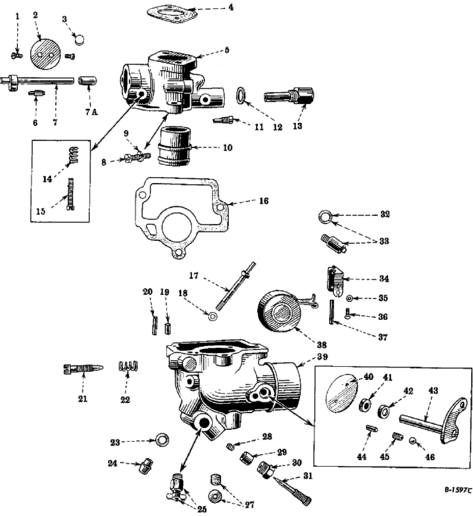anotherbri
Member
The other day I was pulling logs and I knew I was about to run out of gas. Unhooked a log and was gonna get her up to the house when she ran out while idling on the trail. Ok. No biggie. Went out and got some fresh ethanol free 89 octane gas. Put it in the next day and fired her up. Went back to dragging logs, but noticed she was sputtering & popping again under load.
I had this problem a month ago and found 1 plug might have been bad. Replaced the plugs with 3116's and she ran great again.
The only thing that happened before this started was the running out of gas. Oddly enough though......when this happened a month ago, I was getting low on gas there too, but it didn't run completely out that time.
I've been wanting to replace the cap & rotor and points and condenser, but it was running good, so why fix it? But now I'm heading that route again.
I check the screen in the carb and blew back the line. Gas flows out good. Clean the bowl, not much was in there. I don't know if there is a screen in the tube going into the tank from the bowl.
I also pulled all the wires except one at a time for each cylinder while idling. Each cylinder will run at idle by itself with the other 3 wires off.
It idles like a sleeping baby and runs full throttle.
But if I move the throttle from idle to full in a rapid fashion, it will pop and sputter till it catches up. And if I put it under load, such as going uphill, it will pop and sputter.
Harry
I had this problem a month ago and found 1 plug might have been bad. Replaced the plugs with 3116's and she ran great again.
The only thing that happened before this started was the running out of gas. Oddly enough though......when this happened a month ago, I was getting low on gas there too, but it didn't run completely out that time.
I've been wanting to replace the cap & rotor and points and condenser, but it was running good, so why fix it? But now I'm heading that route again.
I check the screen in the carb and blew back the line. Gas flows out good. Clean the bowl, not much was in there. I don't know if there is a screen in the tube going into the tank from the bowl.
I also pulled all the wires except one at a time for each cylinder while idling. Each cylinder will run at idle by itself with the other 3 wires off.
It idles like a sleeping baby and runs full throttle.
But if I move the throttle from idle to full in a rapid fashion, it will pop and sputter till it catches up. And if I put it under load, such as going uphill, it will pop and sputter.
Harry




